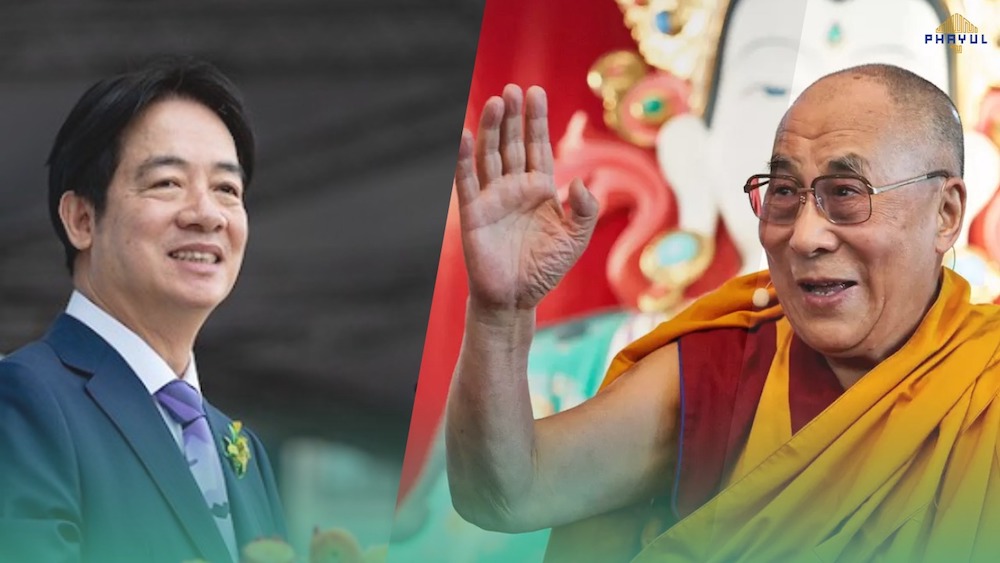By GEORGE SIORIS
Special to The Japan Times
CHIANG MAI, Thailand — With India’s recognition of the Tibet Autonomous Region as a part of China — a corollary result of the recent talks in Beijing between Chinese and Indian leaders — the region has ceased to be viewed as a historical buffer state between two Asian giants. This is of tremendous importance to all three parties concerned and to strategic balances in the heart of Asia as well. Tibet has been squeezed between these two great powers for centuries; now its tragic “liberation” of the ’50s seems to have been acknowledged even by New Delhi in spite of the legacy of Pandit Nehru, who was always fearful of jeopardizing Tibet’s crucial position as a buffer.
Without intending to enter all aspects of the debate about the destiny of the roof of the world, I would like to focus on a historic angle. It’s nothing spectacularly original, but a reminder of undisputed facts conveniently ignored. Even if not a full-time historian, a dispassionate student can evaluate China’s historic claims on the Buddhist stronghold of the Himalayas. Even if we accept the reality — unpleasant in this case — that a successful invasion, like a successful revolution, creates its own basis of legitimacy and that, therefore, Tibet has been, since 1959, under the Chinese sphere, we may still question Beijing’s argument that China’s historic claims go as far back as seven centuries or more.
The Chinese in fact maintain that Tibet has always been one of the many vassal states of the Middle Kingdom. Why then do most observers of the region not subscribe to this argument?
Tibet has been a very distinct entity since the earliest times. In 640 A.D. Tibetan forces invaded Nepal. In 654 A.D., they made forays into central Asia. In 763 A.D. they reached and conquered the great capital of the T’ang, Chang’an, although this achievement could not be sustained for more than two weeks. In 783 A.D. and 821 A.D., two treaties were signed between Tibet and China. The latter allowed the Tibetan conquests in central Asia. During the Mongol dynasties, a very peculiar relationship developed, with a very loose type of Mongolian suzerainty, while in substance, Tibetan internal and spiritual life continued completely undisturbed.
Still, it was Tibetan religious and cultural values that captured the admiration and acceptance of the Mongols, perhaps as Greece inspired the Romans.
In the 17th century, the great fifth Dalai Lama visited Beijing and was received by the Ming emperor as an absolutely equal leader of an independent state. Later, in the times of the Manchu, things got more complicated, with some Chinese campaigns against Tibet as well as Tibetan counterattacks.
It was only toward the end of the 19th century that a more pronounced “Han” nationalism arose, which, combined with the justified Chinese anxieties about the potential negative consequences of the Anglo-Russian “great game” in central Asia, resulted in a more aggressive stance on Tibet. Yet, in another treaty between Mongolia and Tibet, in 1913, there was clear mention that both of these countries were independent from China. Later, the Nationalists accepted genuine autonomy for the roof of the world, but the Communists came with a very different agenda resulting in the situation that prevails today.
The above facts are, in a nutshell, the political-military aspect of the issue. Beyond that, we have to consider a completely diverse religious and cultural identity that has resulted in a great third type of Buddhism, the Vajrayana or distinct “Tibetan Buddhism.” It is precisely this aspect that has suffered the greatest blows since the ’50s and the one last precious resource that the Dalai Lama seeks to preserve — not by disputing the Chinese annexation but by requesting a genuine autonomy for the continuation of the Tibetan way of life.
Even from as brief a summary as the one above, one can see that Tibet has not been another easygoing vassal of the Middle Kingdom in the context of periodical “tributes from barbarians” and that the contrary claims of Beijing are deprived of historical proof. In times of strength, Tibet has disputed Central Asian and even Chinese territories; in times of decline it has tried to fight ferociously for its independence. Its fate was tragically sealed only in the ’50s.
The very notion of “suzerainty,” as the Dalai Lama points out, could not be automatically transplanted from its Western context to the Tibetan reality, where it signified “a personal matter between the Dalai Lamas and the Manchu (and Mongol) emperors.” Moreover, the International Commission of Jurists in 1959 clearly and unequivocally stated that “the events of 1911-12 mark the re-emergence of Tibet as a fully sovereign state, independent in fact and in law of Chinese control.”
All the above are just “history,” of course, but one should not ignore it. It may still prove useful as a new Chinese leadership shows some hopeful signs of foreign policy reappraisals and does not seem totally averse to perhaps a kind of accommodation with moderate Tibetan aspirations. It is obvious that Beijing must maintain very delicate balances with its many other minorities; therefore, the ’50s solution may be obtained somewhere in “the golden middle.”
George Sioris, a former ambassador of Greece to Japan, is president emeritus of the Asiatic Society of Japan and a contributing adviser to The Japan Times.









